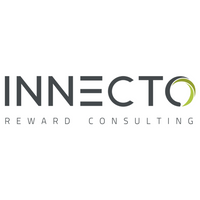Get to grips with the value your benefits package delivers by asking these 5 key questions

To get to grips with your benefits package and ensure your company is feeling the benefit of your benefits you need to ask the following five key questions:
• What have you currently got in place?
• Who are your employees?
• What is valued by your employees?
• How does it compare to market?
• How are you communicating this to your employees?
1. So, what have you currently got in place?
First of all you need to make sure you have a full list of what you have in place. This sounds straightforward but often in larger or multi-site organisations you find a variety of practice or legacy arrangements, and you need to make sure you know your full proposition. It may be you have something in one area that you may want to bring in across the company.
So, dig into the corners and ask around the various HR and payroll teams to find out what is in place. Don’t forget to include those little perks; for example, free tea or coffee. Think of anything your company does which helps make life a little more pleasant for your people.
2. Who are your employees?
Who are the people who work for you and are there distinct groups of employees? Segmentation of employees gives you that insight and allows you to consider who you’re targeting with your benefits.
One of our clients works in an industry with an ageing workforce and they found they had two distinct groups of employees; the older, highly qualified, settled workforce which makes up most of their employees, but also the young, developing experience, primarily single group of employees. Although the latter group are the minority, the client needs to focus on their happiness to ensure the pipeline of engineers doesn’t run dry in a few years.
By recognising the different groups within their company, the client ensured a mix of benefits so the younger group (who they desperately needed to retain and bring through the business) had something of value from the benefit package.
3. What is valued by employees?
Next you need to understand what is actually valued by your employees. Many companies provide benefits simply because they are offered by other companies, but without particular thought to whether or not they work for their employees.
An easy way to gauge this is to simply look at take-up rates of benefits. How many people have filled out that private medical insurance? How many calls a year does your employee assistance programme receive? If it isn’t being used then is it worth the cost just to have it on your list of benefits?
The other way to find out what your employees value is simply to ask. Many companies seem reluctant to engage with employees about benefits, but take the time to sit down with some employees and ask what they think of their benefits. You’ll soon hear which they like the most, which they don’t, and which they’ve never heard of!
4. How does it compare to the market?
For the majority of ‘standard’ benefits, i.e. holiday, sickness, pension, medical benefits, etc, there are a number of places you can find benchmarking information about typical practice. Understanding how your benefits compare in the market gives you insight as to where you might need to invest, and what you should promote. If you have a benefit which is at the top of the market, then make sure you have it front and centre, and your employees know about it.
Do take the time to think about how you compare to the market though. Think about your employee profile and what they value; if you’ve got a lot of employees at the age to start families, you can look to the upper quartile of maternity and paternity pay to demonstrate that you support them and provide a benefit which they will use and value.
It’s difficult to benchmark anything which isn’t standard, so for some things you’ll need to consider what you’re doing and what impact it might have. Free tea and coffee is great, but do you offer quality tea and coffee or one of those cheap, free vending machines which provide the world’s worst hot drinks? It’s a personal bugbear, and I always wonder why those companies bother, as it comes across as trying to tick a box rather than provide a benefit.
5. How are you communicating this to employees?
The last step, but really the most important, determines whether the time and money spent has been worthwhile. This is the basis on which your benefits stand or fall. If employees don’t know about the benefits you offer, then they cannot value them.
There’s a fine line to follow to avoid overloading your employees, but aim to make regular communications to your employees and talk about benefits. Creative communications strategies can help engage staff with their workplace benefits, whether that’s quirky campaign themes, staff champions or even traditional handwritten letters.
Consider a “Benefit of the Month” mailshot or briefing sessions, e.g. what is Private Medical Insurance, held every quarter. One company puts up posters in its bathroom stalls to take advantage of a captive audience!
Once you’ve answered these five questions you can turn your benefits offering from an afterthought to a valued part of your employee’s company package.
The author is Mark Macoun, senior reward analyst at Innecto.
This article is provided by Innecto.
Supplied by REBA Associate Member, Innecto Reward Consulting
The UK’s largest independent pay and reward consultancy, transforming pay into performance.







